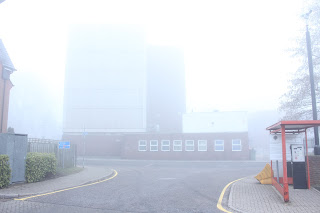Last week I took yet another plunge into photographic 'manual world'. I had volunteered to do a photo-shoot of a dance production at the school I work at.
I discussed this prospect with our performing arts technical expert, the ever-cool, calm and collected Billy. He is a walking photographic wizard, a real fund of experience and a wealth of suggestions. We spoke about the prospect of doing the dance 'shoot' in manual, even to the extent of shooting in RAW.
I tried to be clever, throwing in casual references to shutter speed, aperture settings and ISO sensitivity and the 'exposure triangle'. Like I knew what I was talking about...!
I heard echoes of a very similar conversation I'd had with Dawn Rogers on that one-to-one day we'd had a few Saturdays ago. Same idea, same challenge. Oh dear...
Well, the evening of the dance production came around. I began with looking at what 'automatic' was going to give me - and then took the plunge! And what a difference it made. What a feeling of 'making art'. OK, I didn't go all the way - RAW will have to wait until I have practised the workflow from RAW to the edited image. I wanted to get the photographs to the dance department as quickly as possible. Next time... I promise!
So a huge 'thank you' to Billy! If he knew I was pretending in our initial conversation, then he very graciously didn't let on.
'Automatic' - it's so yesterday...!

























.JPG)





.JPG)











































